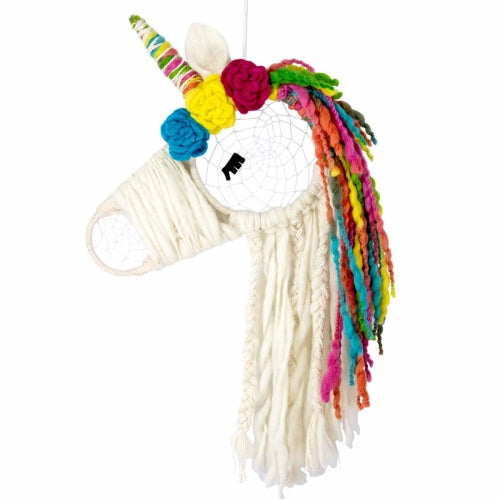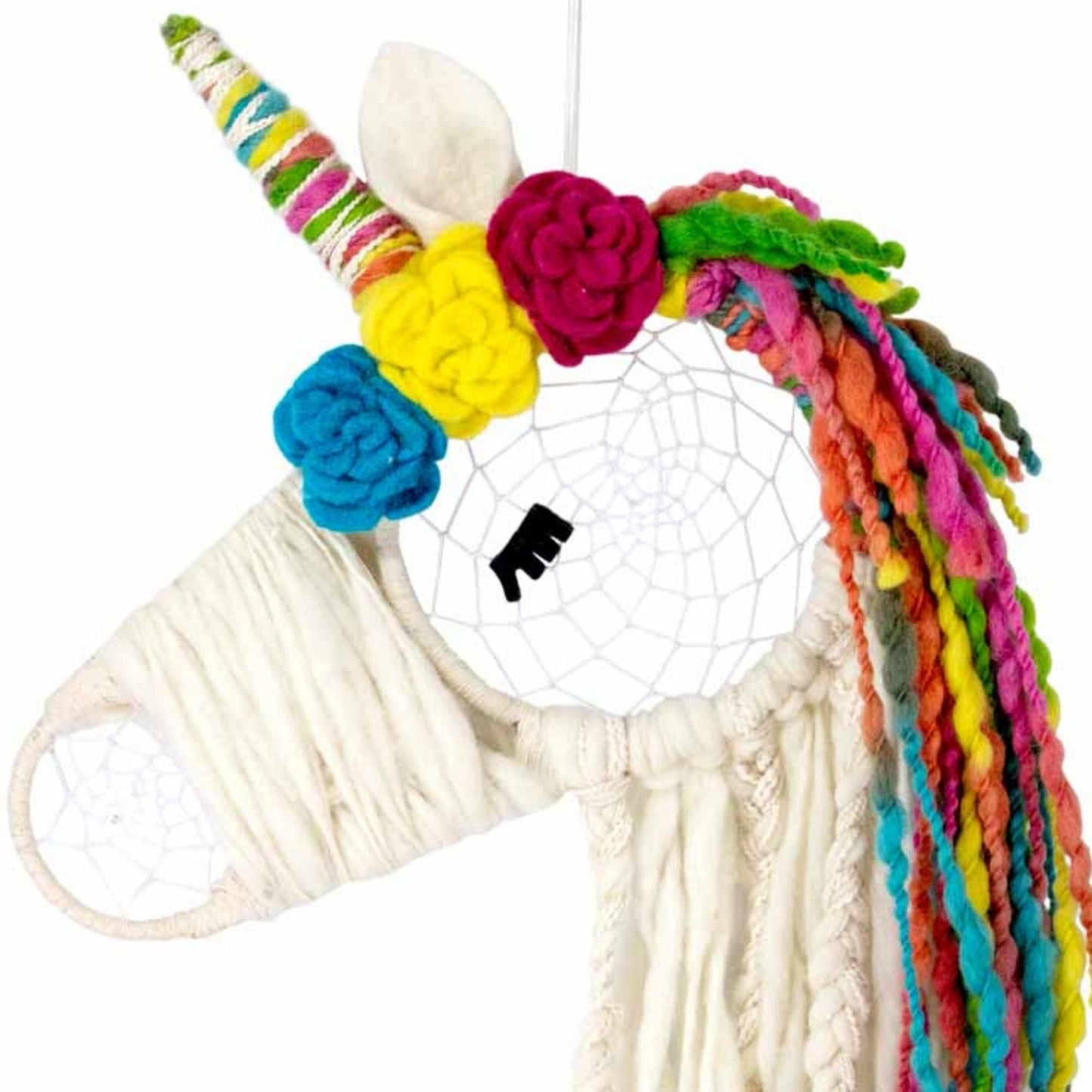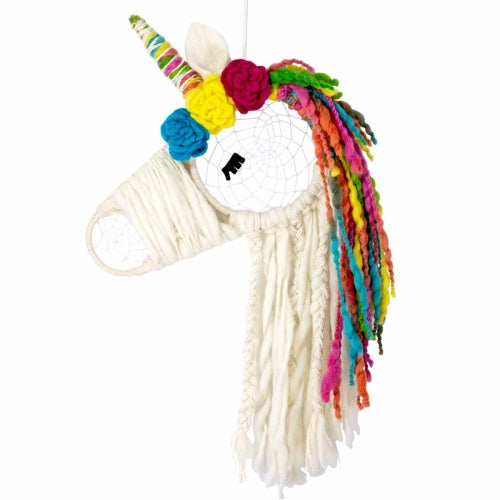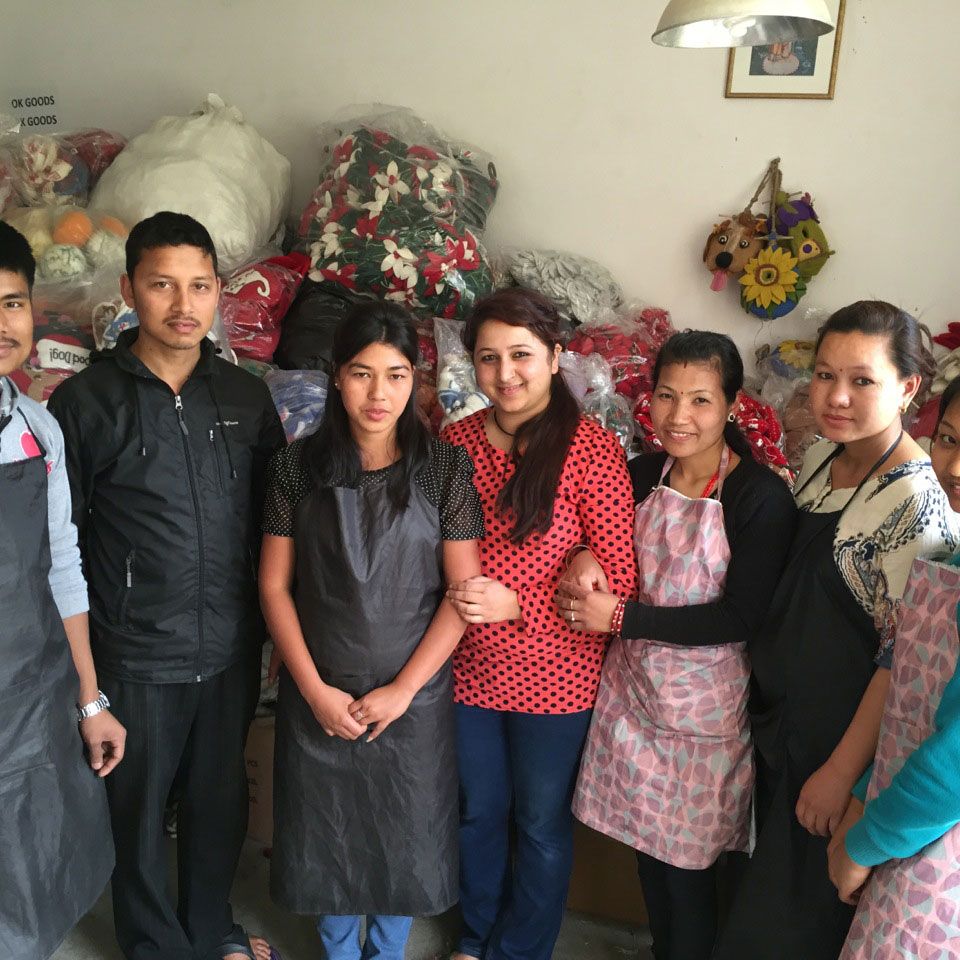Global Crafts
Handmade Unicorn-Rainbow Dreamcatcher - 24"
Handmade Unicorn-Rainbow Dreamcatcher - 24"
Couldn't load pickup availability
This whimsical handmade Unicorn dream catcher is made using a natural cane and woven with a long-lasting wax-covered thread. Wrapped and braided using traditional techniques by Nepalese artisans, they are often decorated with beads, crystals and stones.
Product Features: Measures 24 inches by 14 inches Ethically handmade in Nepal Socially responsible products that are empowering consumers to purchase according to their values and help alleviate poverty. Fair Trade. So much more than a product assortment; it's about safe workplaces, fair wages + community investment in the people.
The Story Behind the Art: Dream Catchers are often referred to as Sacred Hoops. The original Dream Catcher can be traced back to the Ojibwe Native American tribe where they were originally used as talismans to protect sleeps of all ages from bad dreams. Traditionally shaped as a circle, it is believed the shape represented the circle of life and the travels of the sun and moon across the sky. Woven like a spider web, dream catchers are meant to capture bad dreams during the night and hold them there until the sun of the morning can burn them away. The strands that hang below are traditionally meant to take the good dreams and gently carry them down to the peaceful sleeper.
Share
About the Artisans
About the Artisans
 dZi Inc. has been working with artisans in the Tibetan exile community in India since 1990, and with Nepali artisans involved in traditional Tibetan style crafts since 1995. Their products are marketed as part of dZi’s ‘Tibet Collection’ line.
dZi Inc. has been working with artisans in the Tibetan exile community in India since 1990, and with Nepali artisans involved in traditional Tibetan style crafts since 1995. Their products are marketed as part of dZi’s ‘Tibet Collection’ line.
Authentic cloth prayer flags printed on hand-carved woodblocks are specially made for dZi by The Gu-Chu-Sum (9-10-3) Movement of Tibet, established in 1991 and based in Dharamsala, India. Gu-Chu-Sum was first organized by ex-political prisoners from the Tibetan freedom movement; monks, nuns and lay people who had escaped from Tibet due to political persecution. Its purpose is to provide employment and support to Tibetan refugees needing help in India, and to educate about human rights abuses in Tibet. You can try to visit www.gu-chu-sum.org, but the Chinese Government regularly sabotage their site!
dZi’s screen printed prayer flags are made by the Tibetan Nuns Projection (TNP), also based in Dharamsala, India. TNP’s mission is to provide a safe and supportive environment and education for Tibetan nuns who have fled Tibet for reasons of religious and political persecution. Visit tnp.org to learn more.
dZi’s Paper Prayer flags and incense are made by Tibetan Handicraft in Kathmandu Nepal, a member of Fair Trade Group Nepal and leader among the handmade paper export community. This business supports hundreds of people in the local community through it's income generation enterprise, and runs an elementary school providing free and low cost education for local children.

Materials
Materials
In South America, brazil nuts grow during the 4-month dry season that differs from region to region. The Brazil nut is a hard-shelled fruit, similar to a coconut, and takes about 14 months to mature. The fruit is about 4-6 inches in diameter and can weigh up to four pounds. The shell of the fruit is about a quarter of an inch thick and contains between 12-24 nuts.
Brazil nuts are primarily harvested from wild trees during the six-month period of the rainy season. Because the Brazil nut trees are so tall, harvesting the fruits consists of gathering the fruit after they fall. Once the fruit falls, it has to be gathered quickly so they are not susceptible to fungus and animals that can carry them away.
Madre de Dios, a mountainous area of pristine forests, is one of the poorest regions of Peru. The most lucrative industry here is the collection and processing of the Amazon (Brazil) nut into oils, candy, and candles for export. Unfortunately, few producers are informed or rewarded for extracting the oil in a sustainable manner meaning the region's rates of rainforest destruction are almost as high as its poverty.
Dimensions
Dimensions
Care information
Care information





Subscribe to our emails
Subscribe to our mailing list for insider news, product launches, and more.





